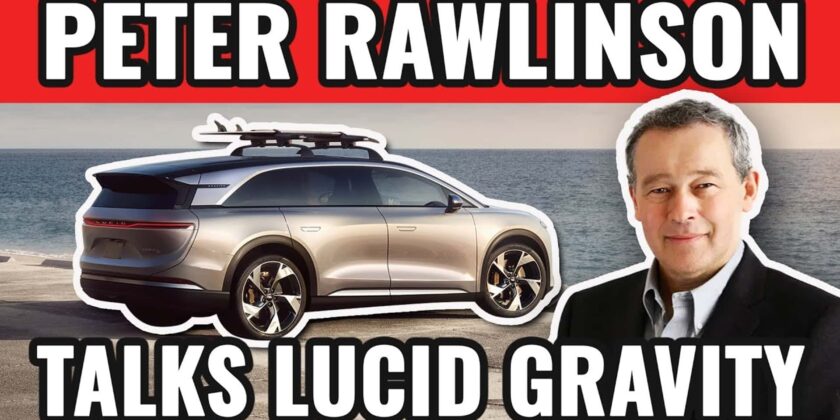By the end of 2024, Lucid Motors expects to begin delivering its second offering, an all-electric SUV called the Gravity. I was recently invited to check out a pre-production copy at a small private Lucid event at the Classic Car Club in Manhattan.
While I was expecting to capture some unique content on the vehicle, I wasn’t expecting Lucid’s CEO and CTO, Peter Rawlinson, to show up unexpectedly and invite me to hop into the vehicle for a 20-minute one-on-one conversation about the Gravity, the state of things at Lucid, the company’s finances and winning the range race through efficiency, but that’s exactly what happened.
Get Fully Charged
Lucid’s CEO talks innovations and challenges
Lucid’s cars boast some of the most advanced EV tech in existence, but their high prices and slower sales of the Air sedan (plus high R&D and startup costs) lead some critics to be skeptical about its future. The Gravy SUV should be the crowd-pleaser Americans want, Lucid’s CEO tells us.
Rawlinson is an excellent CEO to interview, in my opinion. That’s because, as is the case with the CEOs of the other U.S.-based EV startups, Tesla and Rivian (led by Elon Musk and RJ Scaringe, respectively), Rawlinson is very much involved in the engineering of his company’s vehicles and understands every aspect of them.
Before working at Lucid, Rawlinson held the title of Chief Engineer at Lotus, Principal Engineer at Jaguar, was the Chief Engineer of the Model S, and held the position of VP of Vehicle Engineering at Tesla during his tenure there. He knows his stuff.
Rawlinson was also featured in a few of Lucid’s videos in the Tech Talk series that are deep dives into Lucid’s tech and explain the engineering in simple terms so anyone can follow. I highly recommend checking them out as they are just as enjoyable to watch as they are informative.
Lucid Gravity efficiency comparison
During our chat, Rawlinson revealed how the company decided on a squircle-shaped steering wheel for Gravity. To be honest, I didn’t know squircle (square with rounded edges) was a legit word until now, but evidently, it is.
The CEO even offered his thoughts on a steering yoke and said he doesn’t mind it for straight-line highway driving, but not for driving around town or in emergencies. He also added that they made 25 different iterations of the squircle wheel before settling on the one that’s going into production.
Rawlinson also explained how the motors used in the Gravity are slightly more efficient than those currently used in the Air, and the battery chemistry is slightly different which produced an improvement. The Gravity is said to offer 440 miles of range on a battery pack estimated to be 92 kWh to 112 kWh, half the size of some behemoths out there. The focus is on efficiency, not stuffing in more battery cells; “range through responsibility,” Rawlinson said.
It’s also clear that Lucid is bothered a bit by reporting that focuses on the company’s current losses instead of explaining how startups typically lose money for a decade because they are in constant expansion mode as they build factories and invest in future products, and Rawlinson took some time to make sure he got his point across about that fact.
He also spoke about Lucid’s next-generation platform. It will launch mid-decade, and allow the company to go down-market and offer more affordable vehicles.
Gallery: 2025 Lucid Gravity
There are still a lot of unknowns with the Gravity. Lucid, and Rawlinson here, stated that the Gravity will have a starting price that’s just under $80,000 and will qualify for at least some portion of the federal tax credit, but what will that version look like?
It’s doubtful it will have the largest battery pack option and the 440+ mile range Lucid has been touting, but we don’t have any information on battery pack options or trim levels yet.
Source: Read Full Article

